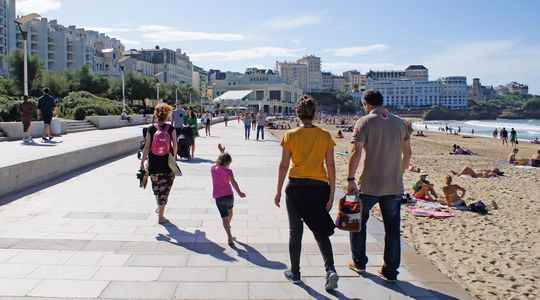It’s no longer a secret: since the health crisis, small and medium-sized towns are increasingly attracting families looking for a better quality of life. Good news for the regions! “A family is necessarily a development lever for a territory, because it is generally anchored there for several years”, analyzes Antoine Angeard, general delegate of the Federation of attractiveness agencies. This also stimulates professional activity. For example, for six new families settled in Bar-le-Duc (Meuse), a local job is created, according to calculations made by Olivier Portier, expert in the analysis of territorial dynamics for the Laou company (see page 67), which accompanies these life changes.
Our annual ranking of intermunicipalities where it is good to live as a family reflects this trend. In the top 5 established from official data gathered by Le Cadran on many topics such as health, education, shops, security, specific care for the elderly and disabled, leisure and social assistance the South -Ouest features prominently, with no less than three representatives: the urban communities of the Basque Country, Albi and Castres-Mazamet.
The mountain is also in the spotlight with the Lons Agglomeration community space and the community of communes of Briançonnais, in the Hautes-Alpes. Winners who have in common to offer easy access to the surrounding nature. Briançon, which culminates at 1,300 meters above sea level, thus allows its inhabitants to reach the ski slopes from the city center while Lons-le-Saunier is located a stone’s throw from the magnificent Jura forests.
The success of the Basque Country
Year after year, the success of the Basque Country is undeniable. Both close to the Pyrenees and the Atlantic Ocean, this territory also has many shops, high-performance high schools and an excellent leisure offer. The (very) big drawback of this attractiveness concerns the soaring real estate prices. “After my studies in Montpellier, I wanted to come back and settle near Biarritz, where I had grown up. But I had to live with my parents for several months! With prices above 4,000 euros per square meter When I bought it, I ended up renting a simple studio. And again: I found it thanks to acquaintances”, says Enéa indignantly. To regulate the market and avoid real estate speculation, the city of Espelette was the first French municipality to experiment with the “solidarity real lease”, a device based on the dissociation between land and buildings. In concrete terms, the agglomeration retains ownership of the land while limiting the price on resale. A social accession which allows to act durably on the habitat.
In the Albigensian too, people are concerned about helping families find accommodation. The agglomeration community has joined forces with banks to offer a zero-rate loan to first-time buyers via the “First key” program. A device from which 500 people have already benefited. In addition, there are many shops and quality care available in this territory, while crime is less there than elsewhere.
Public transport for easy home-work journeys
Still in the Tarn, not far from Albi, the agglomeration of Castres-Mazamet has almost the same assets as its neighbor and finishes third in this ranking. It has 80,000 inhabitants, more than 60% of whom are concentrated in these two urban centers. “The price of rents remains reasonable and it is essential for us to promote mobility”, specifies Jean-Paul Maraval, head of the communication department. For this reason, the Libellus network that serves the area has become free for permanent residents, which promotes public transport for home-work journeys. As for residents living in more isolated areas, a reservation service offers a bus or taxi to reach the nearest stop, for an annual subscription of 5 euros. A service also adapted to the 2,200 students in the area.
Although the urban community of Lons has also developed a free bus system to Dole to transport spectators to the theatre, it does not have a university. And yet, it has students! “To prevent the drain of young brains, in 2019 we created a digital campus offering more than a hundred higher education courses provided by various French universities such as the Sorbonne. A program that takes into consideration the needs of local businesses”, specifies Marine Couturier, attractiveness and quality of life director. In two years, the number of students has doubled and the program will soon be supplemented by innovative concepts around e-sport.
In Briançon, a solution against the medical desert
Also a mountainous territory, historically known for its good air and its sanatoriums, the community of communes of Briançonnais has been able to resolve the crisis affecting part of France: the medical desert. If there are only 21 general practitioners and if specialists are rare, elected officials have found the parade. “We organize, one day a month, a consultation with an ophthalmologist from the Gap hospital. And we rely on networking and synergies, in particular with our own hospital center, explains Arnaud Murgia, mayor (various right) of Briançon and president of the community of municipalities. In addition, we have an emergency service, an MRI inaugurated this year, a scanner, operating theaters and two beds in the intensive care unit.”
Partnerships with the two largest local private health centers have also made it possible to ensure a permanent presence of health professionals in the sector’s multidisciplinary centers, even the most remote. “In this field, those who succeed in overcoming medical deserts work at the scale of the territory”, analyzes Baptiste Gapenne, co-founder of the Audacious Territories site, an observatory of innovative local initiatives. So many good ideas to duplicate.
